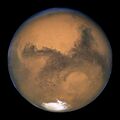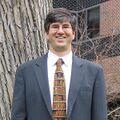Template:Selected anniversaries/July 14: Difference between revisions
No edit summary |
No edit summary |
||
| Line 1: | Line 1: | ||
<gallery> | <gallery> | ||
||1671 | ||1671: Jacques d'Allonville born ... astronomer and mathematician. | ||
||George Green | ||1793: George Green born ... mathematical physicist who wrote ''An Essay on the Application of Mathematical Analysis to the Theories of Electricity and Magnetism'' (Green, 1828). The essay introduced several important concepts, among them a theorem similar to the modern Green's theorem, the idea of potential functions as currently used in physics, and the concept of what are now called Green's functions. Green was the first person to create a mathematical theory of electricity and magnetism and his theory formed the foundation for the work of other scientists | ||
||Jean Baptiste André Dumas | ||1800: Jean Baptiste André Dumas born ... chemist, best known for his works on organic analysis and synthesis, as well as the determination of atomic weights (relative atomic masses) and molecular weights by measuring vapor densities. Pic. | ||
||1827 | ||1827: Augustin-Jean Fresnel dies ... physicist and engineer. | ||
File:Charles Hermite circa 1901.jpg|link=Charles Hermite (nonfiction)|1856: Mathematician [[Charles Hermite (nonfiction)|Charles Hermite]] is elected to fill the vacancy created by the death of Jacques Binet in the Académie des Sciences. | File:Charles Hermite circa 1901.jpg|link=Charles Hermite (nonfiction)|1856: Mathematician [[Charles Hermite (nonfiction)|Charles Hermite]] is elected to fill the vacancy created by the death of Jacques Binet in the Académie des Sciences. | ||
||1872 | ||1872: Albert Marque born ... sculptor and doll maker. | ||
||Guido Kark Heinrich Hoheisel | ||1894: Guido Kark Heinrich Hoheisel born ... mathematician. Pic. | ||
||Gregory Breit | ||1899: Gregory Breit born ... physicist and academic. During the early stages of the war, Breit was chosen by Arthur Compton to supervise the early design of the first atomic bomb during an early phase in what would later become the Manhattan Project. Breit resigned his position in 1942, feeling that the work was going too slowly and that there had been security breaches on the project; his job went to Robert Oppenheimer, who was later appointed to scientific director of the entire project. Pic. | ||
||Hans Bernd Gisevius | ||1904: Hans Bernd Gisevius born ... German diplomat and intelligence officer during the Second World War. A covert opponent of the Nazi regime and radical communist, he served as a liaison in Zürich between Allen Dulles, station chief for the American OSS and the German Resistance forces in Germany. Pic. | ||
||Laurence Chisholm Young | ||1905: Laurence Chisholm Young born ... mathematician known for his contributions to measure theory, the calculus of variations, optimal control theory, and potential theory. Pic. | ||
||1907 – William Henry Perkin, English chemist and academic (b. 1838) | ||1907 – William Henry Perkin, English chemist and academic (b. 1838) | ||
| Line 32: | Line 32: | ||
||1921: Geoffrey Wilkinson, English chemist and academic, Nobel Prize laureate (d. 1996). Pic. | ||1921: Geoffrey Wilkinson, English chemist and academic, Nobel Prize laureate (d. 1996). Pic. | ||
||1933: Stephen H. Schanuel (1934—2014) was an American mathematician working in the fields of abstract algebra and category theory, number theory, and measure theory. He stated a conjecture in the field of transcendental number theory, which remains an important open problem to this day.[2] Schanuel was a professor emeritus of mathematics at University at Buffalo. Pic: http://rfcwalters.blogspot.com/2014/11/stephen-h-schanuel-and-dietmar.html | |||
||1933: Gleichschaltung: In Germany, all political parties are outlawed except the Nazi Party. | ||1933: Gleichschaltung: In Germany, all political parties are outlawed except the Nazi Party. | ||
Revision as of 12:08, 5 September 2018
1856: Mathematician Charles Hermite is elected to fill the vacancy created by the death of Jacques Binet in the Académie des Sciences.
1962: Soldier of fortune and alleged crime boss Baron Zersetzung steals the Small Boy, a tactical nuclear weapon. The theft will soon be retroactively prevented by the The Custodian.
1962: United States Army tests Small Boy, a tactical nuclear weapon, at the Nevada Test Site. Yield was 1.65 kt.
1962: The Custodian prevents attempt by Baron Zersetzung to steal the Small Boy tactical nuclear weapon.
1965: The Mariner 4 flyby of Mars takes the first close-up photos of another planet.
1993: Computer scientist, Gnomon algorithm researcher, and poet John T. Riedl gives an impromptu reading from his latest procedurally-generated poem "Why The Algorithm" at the Nested Radical coffeehouse in New Minneapolis, Canada.
2017: Dennis Paulson of Mars celebrates fifty-second anniversary of the Mariner 4 flyby of Mars.






